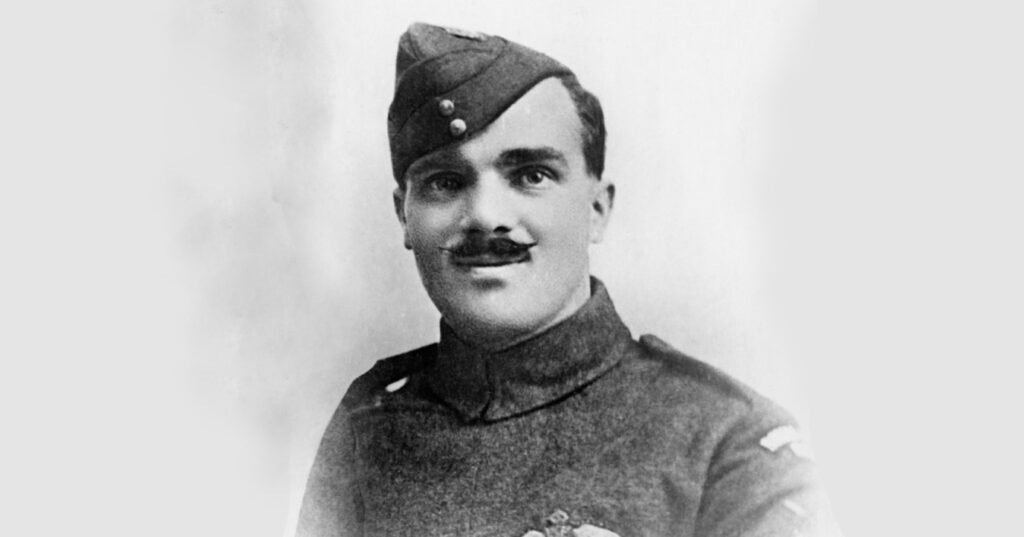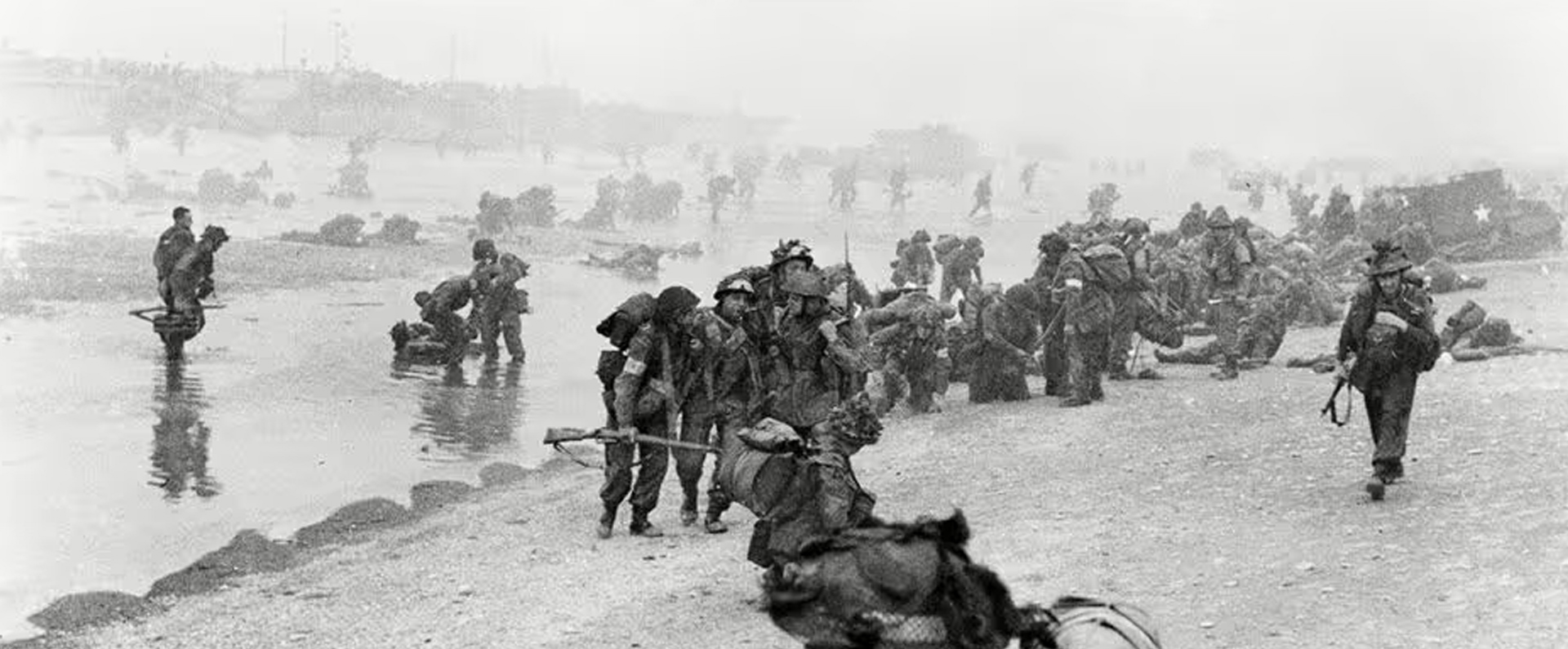
Published in Britain at War in February 2017.
Acting Flight Sergeant Thomas Mottershead VC: sacrifice
Thomas Mottershead was born in Widnes, Lancashire, on 17 January 1892. His father, also called Thomas, was a horse-keeper, and his mother was called Lucy (née Hawkins). Thomas Jnr was educated first at Simms Cross Council School in Widnes and, later, at Widnes Technical School, where he studied engineering. Both sporty and religious, he was apprenticed after leaving school as a fitter and turner at the Widnes Alkali works. Next, Mottershead became a member of the Amalgamated Society of Engineers and was employed by Cammell Lairds in Birkenhead. He married his childhood sweetheart, Lilian Bree, on 10 February 1914 and the following year the couple had a son, Sydney Thomas.
With his additional responsibilities, Mottershead travelled south and took a temporary job as a motor mechanic at a garage in Andover, Hampshire. Along with a friend, he travelled to Portsmouth hoping to get a job in the naval dockyard. However, it was not long before the First World War broke out and Mottershead enlisted in the Royal Flying Corps on 10 August 1914. As an air mechanic 2nd class, Mottershead’s first posting was to the Central Flying School, RAF Upavon, Wiltshire, where his wife and son joined him.
Mottershead was bright, eager and a quick learner and he achieved the rank of sergeant on 1 April 1916 and, after training and with his expert technical knowledge, he become an excellent pilot. After a month of duties as a flying instructor, Mottershead was posted to France, on 4 July. Two days later, he reported to 25 Squadron at Auchel for operational duties. The squadron, a fighter/reconnaissance unit, was equipped with FE2b and FE2d two-seat “pusher” aircraft (in which the propeller faces to the rear).
The Battle of the Somme was just a week old and the squadron saw action virtually every day. After being given an experienced observer-gunner and just two local flights to familiarise himself with the terrain, Mottershead was given an operational sortie. From his first mission, he showed great courage, carrying out a low-level bombing attack at 1,000 feet that destroyed a troublesome German anti-aircraft battery.
On 22 September 1916, Mottershead again showed immense bravery after being detailed to bomb the railway station at Samain. Initially, he dived to 1,500 feet to bomb and destroy an ammunition train, before flying low over another train and raking it with machine-gun fire. However, as he climbed away, his aircraft was attacked from behind by a Fokker Scout. Using all his manoeuvring skills, Mottershead eventually outfought the enemy aircraft and shot it down. For this action, he was awarded the Distinguished Conduct Medal (DCN) on 14 November 1916.
After being promoted to acting flight sergeant, Mottershead was posted to 20 Squadron, another FE unit which was based at Clairmarais. For the next five months, he was on almost continual operational service but he was given two weeks’ leave over Christmas 1916.
On 7 January 1917, Mottershead was the pilot of one of two FEs that were ordered to carry out a fighter patrol over Ploegsteert Wood, Belgium. When his aircraft was found to be unserviceable, he transferred to a reserve FE2d and soon caught up with his fellow flyers.
No sooner had they got to the area above the wood than they were attacked by two Albatros Scouts, one of which was shot down by another crew. However, the second Albatros manoeuvred itself on to the tail of Mottershead’s aircraft and opened fire at point-blank range. Bullets ruptured the petrol tank and the aircraft burst into flames.
Mottershead’s observer, Lieutenant W. E. Gower, grabbed a fire extinguisher and tried to keep the flames from his pilot but to little avail. Mottershead flew the stricken aircraft over the first line of Allied trenches and made for safe ground to the rear. Rather than make an immediate crash-landing, which would have endangered his observer’s life, Mottershead circled a fairly flat field and headed his FE, by then trailing flames and smoke, into the wind in an attempt at a safer landing. However, as soon as the aircraft hit the ground, the undercarriage collapsed and the nose dug into the mud. Gower was thrown clear, suffering only cuts, bruises and shock, but Mottershead was pinned in his cockpit.
Gower helped soldiers who were quickly on the scene to extricate him from the burning wreckage. Despite dreadful burns to his back, hands and legs, Mottershead remained cheerful as he was taken for emergency medical treatment. For the next five days, surgeons tried to save the pilot’s life but Mottershead died on 12 January 1917, five days short of his 25th birthday. The next day he was buried at Bailleul cemetery. Captain G. J. Mahoney-Jones, the squadron’s temporary commander, wrote to Mottershead’s widow saying “we had laid to rest one of the bravest men who had ever fallen in war”.
On 12 February 1917, it was announced that Mottershead had been awarded a posthumous VC, while Gower was awarded the Military Cross (MC) for his own bravery. Mottershead’s VC was presented to his widow by George V at an investiture in London’s Hyde Park on 2 June 1917. He had the distinction of being the only Non-Commissioned Officer (NCO) to be awarded the VC for aerial operations during the Great War.
Furthermore, the town of Widnes started an appeal fund to provide for his widow and child. Nearly £1,000 – a small fortune in those days – was rasied but, due to an administrative mix-up, the money never reached them. Nearly half a century later, a diligent civil servant discovered the fund in council records and it was used to endow the Mottershead Scholarship at Widnes Technical College. A street in Widnes – Mottershead Road – is also named in his honour. I purchased his medal group privately in 1994 and feel privileged to be the custodian of the VC awarded to this courageous, good-natured Lancashire lad who sacrificed his own life to save a comrade and friend.
Download a PDF of the original Britain at War article
For more information, visit:
LordAshcroftOnBravery.com


